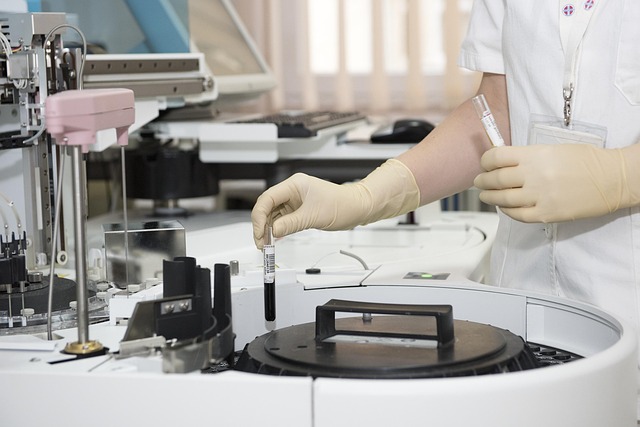Semiconductor-based diagnostics represent a transformative convergence of microelectronics and medical science, enabling rapid, precise, and affordable detection of diseases at scales previously unattainable. By embedding complex sensor arrays, signal processors, and communication modules onto silicon chips, these systems bring laboratory‑grade testing into point‑of‑care settings, from rural clinics to busy emergency departments. The resulting acceleration in diagnostic turnaround time improves patient outcomes, streamlines clinical workflows, and reduces healthcare costs across the globe.
The Core of Semiconductor-Based Diagnostic Technology
At the heart of these innovations lie three key semiconductor technologies that collectively power next‑generation diagnostics: integrated photonics, nanoelectromechanical systems (NEMS), and field‑effect transistor (FET) biosensors. Each offers unique advantages for detecting biological markers—whether they are DNA fragments, proteins, or metabolic by‑products—through optical, electrical, or mechanical transduction mechanisms.
- Integrated photonics channels light through micro‑waveguides etched onto silicon, enabling high‑resolution spectroscopy and fluorescence imaging at micrometer scales.
- Nanoelectromechanical systems translate biomolecular binding events into minute changes in resonant frequency, providing label‑free detection with sub‑femtogram sensitivity.
- Field‑effect transistor biosensors amplify electrical signals from target molecules via charge modulation at the transistor channel, allowing real‑time monitoring and multiplexed assays.
From Lab Bench to Bedside: Deployment Pathways
Transitioning semiconductor diagnostics from research laboratories to clinical practice involves a multi‑stage pipeline. First, prototype chips undergo rigorous in‑silico modeling and bench‑top validation using synthetic analytes. Second, they are fabricated using CMOS or silicon photonics processes that ensure batch consistency and scalability. Third, the devices enter pre‑clinical testing, often integrated into microfluidic cartridges that handle sample preparation autonomously.
“The true innovation lies not only in the chip but in the seamless integration of sample handling, detection, and data analytics,” notes Dr. Elena Ramirez, a leading researcher in biosensor engineering.
Clinical Impact Across Disease Domains
Semiconductor-based diagnostics have already made measurable strides in several high‑impact health areas:
- Infectious Diseases: Rapid antigen and nucleic acid tests now achieve sensitivity comparable to PCR while delivering results in under 15 minutes. This capability is critical during outbreaks, enabling real‑time containment decisions.
- Oncology: Liquid biopsy platforms use silicon‑based sensors to detect circulating tumor DNA (ctDNA) at concentrations as low as one mutant allele per 10,000 normal alleles, allowing earlier intervention and monitoring of therapeutic response.
- Metabolic Disorders: Continuous glucose monitoring systems built on micro‑electrodes offer unprecedented temporal resolution, helping patients manage diabetes with fine‑tuned insulin dosing.
Economic and Accessibility Benefits
The cost trajectory of semiconductor diagnostics follows a steep learning curve: initial prototypes may cost several thousand dollars per chip, but high‑volume production can bring unit costs below $50. This price drop democratizes access, particularly in low‑resource settings where traditional laboratory infrastructure is lacking. Moreover, the miniaturized form factor reduces the need for bulky equipment and trained technicians, empowering community health workers to perform complex tests on the fly.
Regulatory Landscape and Quality Assurance
As these devices transition from bench to bedside, regulatory frameworks evolve to ensure safety and efficacy. In the United States, the FDA’s Digital Health Software Precertification Program provides a streamlined pathway for software‑centric diagnostics, while in Europe, the CE marking process requires comprehensive performance data. Semiconductor manufacturers must demonstrate not only analytical validity but also robustness against manufacturing variability, cross‑talk, and environmental drift.
- Validation studies typically involve blinded clinical cohorts, ensuring that performance metrics—sensitivity, specificity, limit of detection—meet or exceed existing gold standards.
- Post‑market surveillance relies on data aggregation from connected devices, enabling real‑time quality monitoring and rapid firmware updates.
Future Horizons: AI, Edge Computing, and Beyond
Integrating artificial intelligence (AI) with semiconductor diagnostics promises to unlock deeper insights from raw sensor data. Machine learning algorithms embedded on the chip can flag anomalous patterns in real time, reducing false positives and tailoring diagnostic thresholds to individual patient profiles. Coupled with edge computing, these systems can operate offline, sending only essential metrics to cloud servers for longitudinal analysis.
“We’re moving toward diagnostics that are not just passive readers but active decision‑makers, guiding clinicians with actionable information before the patient even reaches the consultation room,” explains Dr. Michael Chen, chief technology officer of a leading diagnostics firm.
Conclusion: A New Paradigm in Health Innovation
Semiconductor-based diagnostics are reshaping the way we detect, monitor, and manage disease. Their convergence of microelectronics, biochemistry, and data science delivers unparalleled speed, sensitivity, and scalability. As the technology matures, it is poised to extend beyond acute diagnostics into continuous health surveillance, personalized medicine, and global public health monitoring. The result is a healthcare ecosystem that is more proactive, equitable, and responsive than ever before.



